Welcome to Part 3 of the 3-part series on my preparation, equipment, and race bike for the Atlas Mountain Race. This is was a surprising amount of work, but I like reviewing my choices because it helps me identify possible issues or missing gear.
Equipment
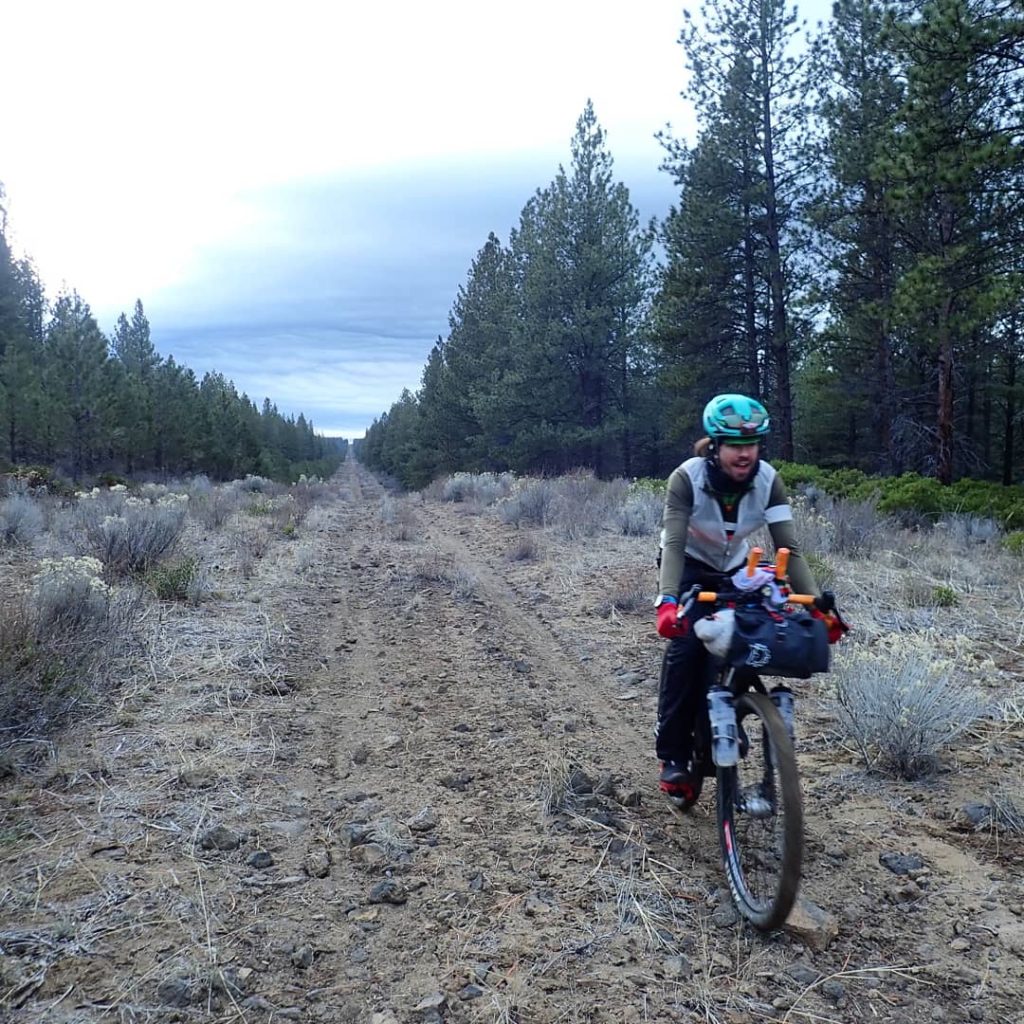
Still gonna send it!
Sleeping Kit:
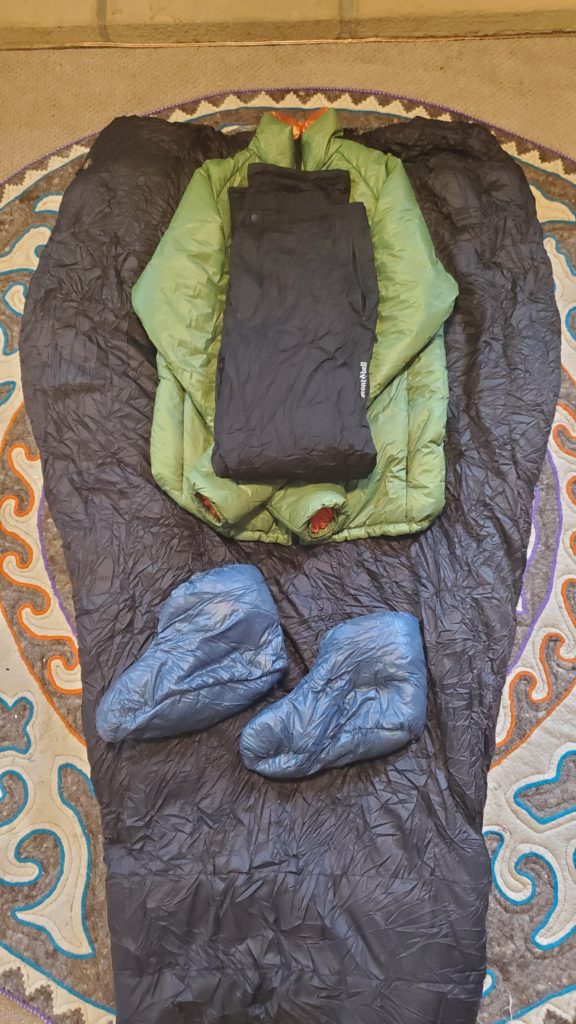
I’m using the same eVent bivy I’ve used for a few years. It’s just breathable enough that I can fully close it up in truly awful weather for a few hours of sleep, but, like all bivvies, it is prone to condensation. I’ve paired the bivy with a Neoair XLite sleeping pad (in short length) and a Hammock Gear 30° Burrow down quilt. This is a slightly less-warm quilt than I would usually opt to carry on an adventure like this, as I tend to run pretty cold.
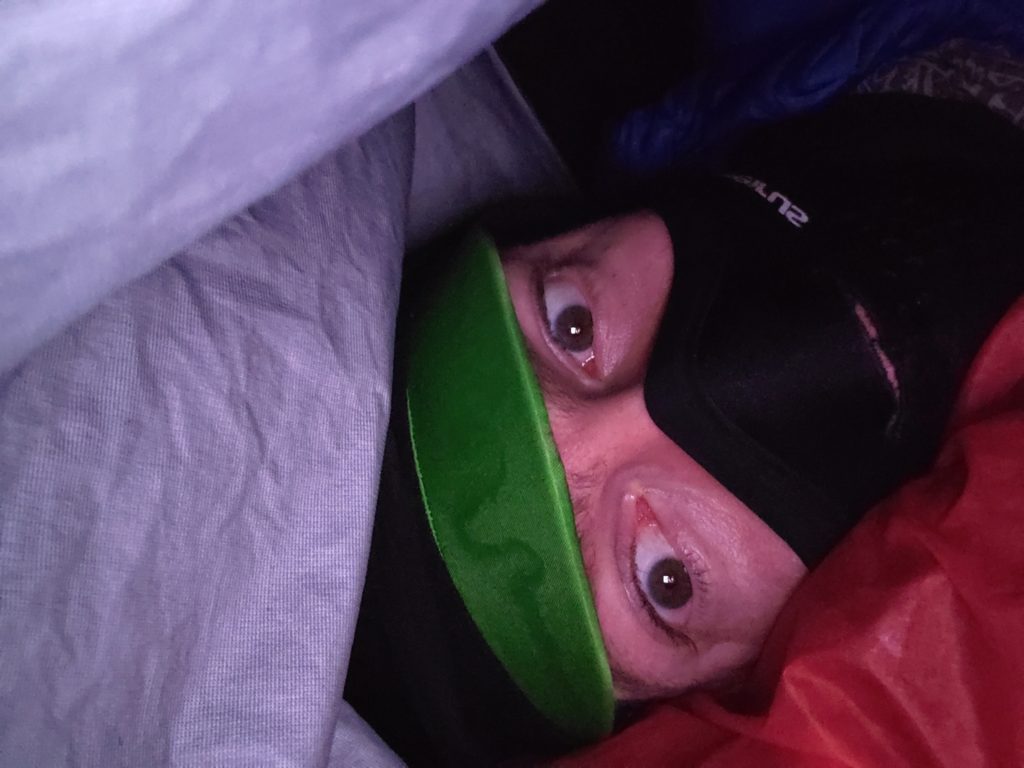
Fortunately, our team is supported by Montbell, who makes some of the best outdoor gear available. Much of my apparel is made by Montbell, including my puffy pants. Yep. Synthetic insulated pants in which I will sleep every night, and probably ride in most mornings. They’re heavenly, and they mean I can get up and get moving without sacrificing comfort on those cold, 3AM wakeups. In Spain, I lost at least a few hours to the cold, waking up in my bivy in the Sierra Del Segura mountains and finding it way too cold to get out of the warmth of my quilt.
I will also be sleeping in a synthetic insulated jacket and down booties to boost my sleeping system’s usable temperature. I usually end up sleeping in my bibs, which grosses some folks out, but I’ll be carrying a pair of lightweight wool boxer briefs should I want to strip the chamois. I’ve tested this system down to the teens (F°) and found it to work very well.
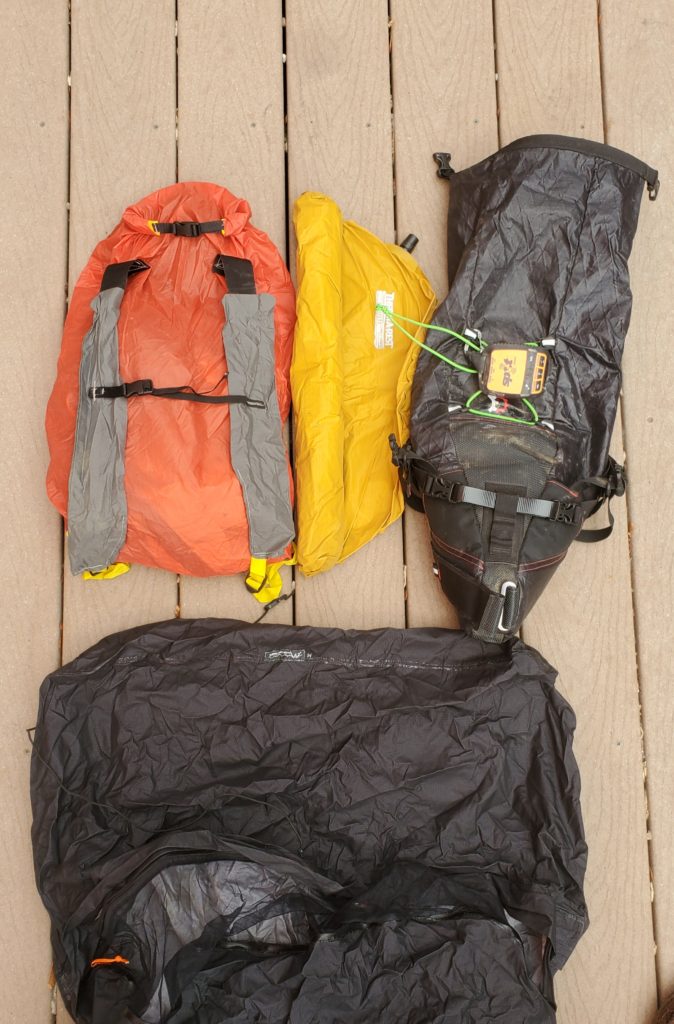
- eVent Bivy
- Hammock Gear 30° Down Quilt
- Thermarest NeoAir XLite Short Sleeping Pad
- zPacks Down Booties
- MontBell Thermawrap U.L. Pants
- Enlightened Equipment Torrid Apex Custom
Rain Gear:
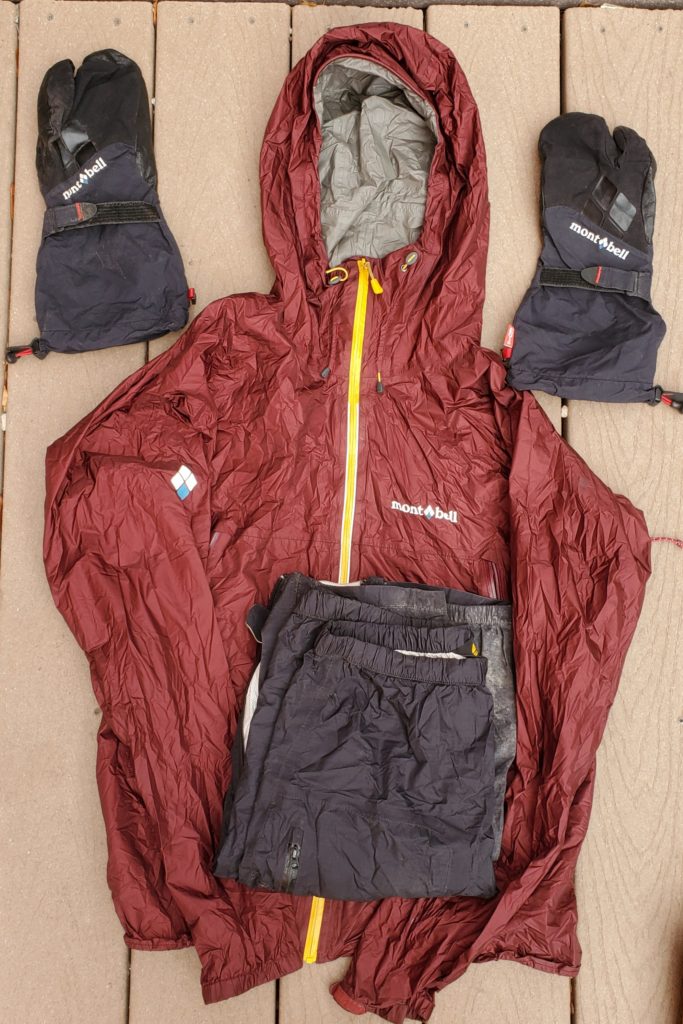
My shell jacket is a Montbell Versalite rain shell. It’s proven to be much more waterproof than any other jacket I’ve used and is super light. It also has HUGE armpit zippers and a helmet compatible hood, should I want to put it over my helmet while riding. It’s a bit flappy in the wind, and I once got the front hem of the jacket caught over the nose of my saddle while trying to descend a ridiculously steep, technical trail. That was scary, but avoidable by using the hem adjustment cord.
My rain pants are many years old and are made by the now-defunct GoLite. They’re not very breathable and I use them only in torrential rain, but they’re lightweight and I haven’t destroyed them yet. I’ll probably replace them with the Versalite pants from Montbell, but I prefer to wear through gear before replacing it rather than constantly reaching for the next shiny thing.
Montbell makes primarily mountaineering and hiking equipment, and my mittens are from their climbing gear section. The mitts have a ‘trigger finger’, meant for carrying an ice ax between your index and other fingers, which happens to work incredibly well for shifting gears on the bike. The mitts have two components: a super warm, super thick inner liner made from merino wool and a lightweight outer mitt that is waterproof. I can use each on its own for versatility, and when paired with a pair of cycling gloves I have all that I need for my hands.
I carry a pair of Showers Pass waterproof socks, and often end up wearing them a lot. My feet run super cold, even when dry, so I can put these on over my lightweight merino cycling socks to add a few degrees of warmth. They are waterproof, which means I can cross creeks and rivers without getting my feet too wet.
- Montbell Versalite Jacket
- GoLite Rain Pants
- Montbell Mountaineering Mitts
- Showers Pass Waterproof Wool Socks
Electronics:
I’ve been using the Wahoo Roam for bikepacking over the last several months and it’s proven to be really fantastic. I love having the headunit features of a cycling computer combined with the navigation features of a dedicated navigation device. The eTrex is great too, but can be finnicky to use on the bike, and it isn’t compatible with my speed/cadence sensor or heart rate monitor. I’m carrying both on AMR, with mounts for each, but plan to use the Roam unless it has problems.
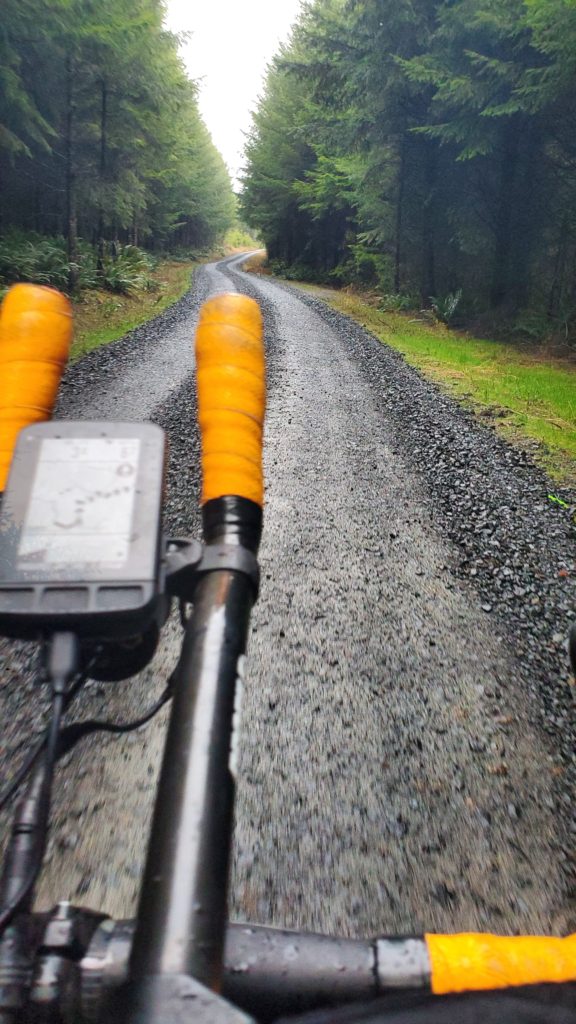
I’m carrying two RavPower 10000maH battery packs for Atlas Mountain Race. At Iberica Traversa, I carried one 26800maH battery and one 5000maH and, while it worked, I definitely had more capacity than need. The RavPower banks support pass-thru charging, so I can charge the battery while charging another device FROM the battery, which is super handy.
My light setup is simple. The Sinewave Beacon is my primary headlight and also provides USB power to other devices/battery banks. The light I’m using on the rear of the bike is a super cheap USB rechargeable Serfas light. I’m carrying one mount and two of the small lights that screw into the mount by hand. They last a long time on a single charge (>24 hours in low-speed flash mode). I’ll use the Petzl Tikka to set up camp and to add a bit of ‘directable’ light while on the bike.
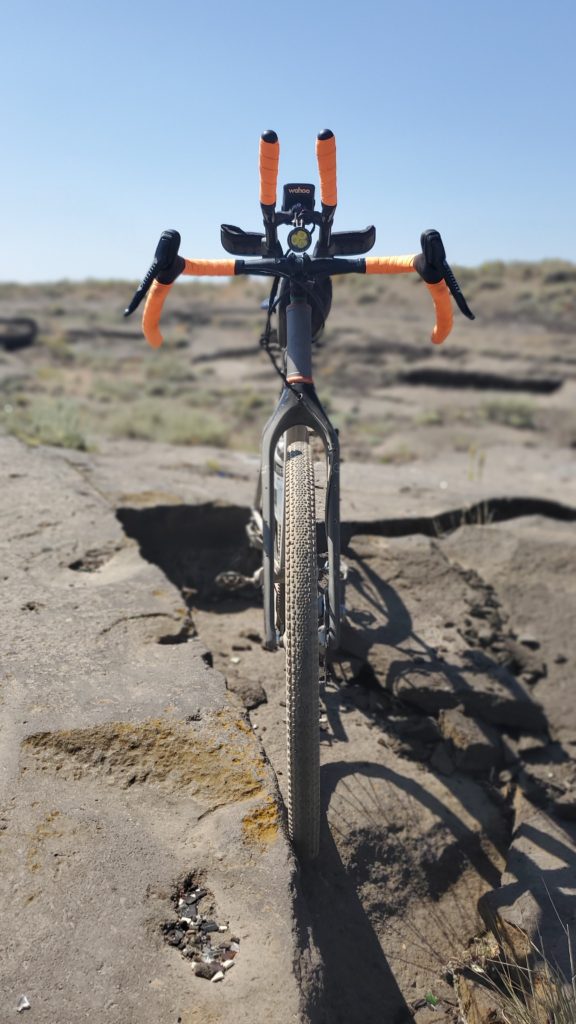
- Primary Navigation: Wahoo Roam Cycling Computer
- Secondary Nav: Garmin eTrex 30x
- Battery Banks: RavPower 10000maH with quick charge in/out
- Front Lamp: Sinewave Beacon
- Rear light: Serfas Apollo USB (x2)
- Headlamp: Petzl Tikka (zip-tied to helmet)
Clothing:
I generally wear most of my clothing most of the time, except for the helmet liner. The arm and leg warmers provide some protection from the sun, wind, and occasional brush with trailside flora. If it’s super warm, I’ll stop and remove the warmers and lather up with the sunscreen.
I’m extremely partial to the Rapha Brevet base layer, which doesn’t get stinky until day 3 or so. And by that time I’m already used to my own stink. My team kit is comfortable and since it matches, I’m faster in it. +11 Watt Bonus. Free speed. I wear thin wool socks so I can layer the waterproof socks over them if the need arises.
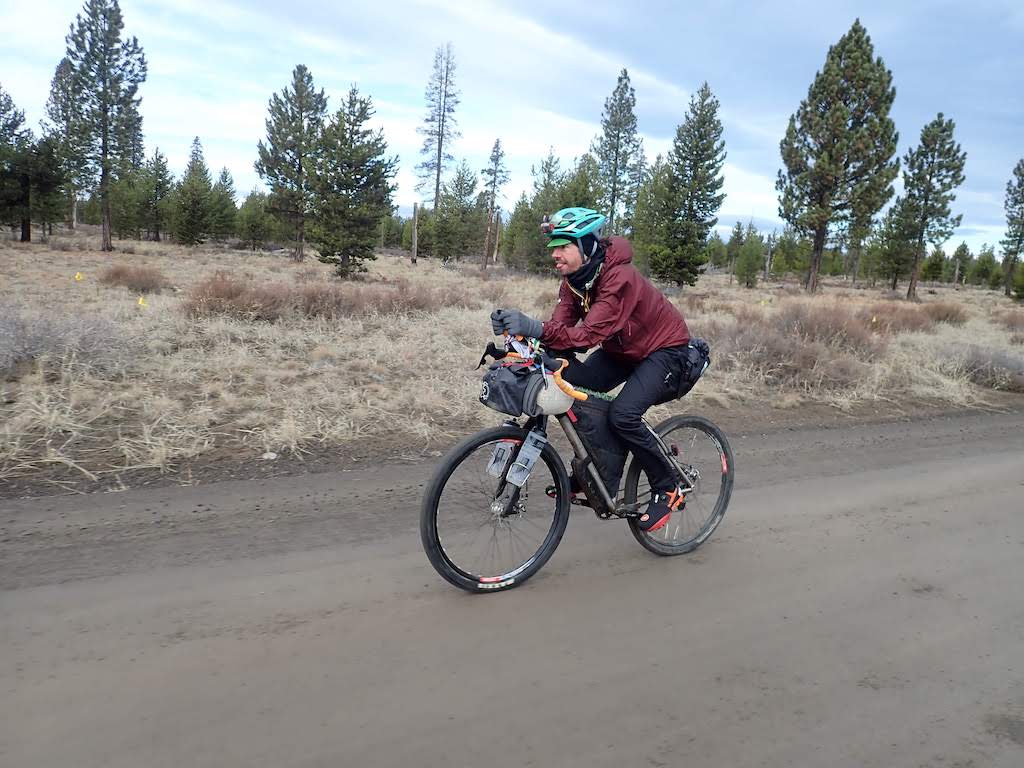
The wind vest is a key piece of kit. It weighs 1.6 ounces and adds ten or so degrees of warmth, a small amount of water resistance, and plenty of wind resistance. I wore it every day in Spain, on long descents and whenever the sun dipped behind the hills. It wads up into an easily-lost handful of nylon, and fits easily in my top tube bag or framebag.
Shoes are probably the most personal choice you can make. My feet are narrow and, though they are exorbitantly expensive, Sidi fits me better than any other make. And believe me, I’ve tried many options. The Defenders are an enduro shoe, and are named for the raised ankle on the inside of the shoe. I’m stoked on them, and used them in SRMRno1, Iberica Traversa, and dozens of bikepacking trips in between. The rubber is sticky and the sole is stiff where it needs to be but flexible enough for extended hike-a-bike sections. I use Superfeet Green insoles in the shoes, which make them comfortable for hiking and add a bit of insulation to the bottom.
- Jersey & Bibs: Northwest Competitive Adventure Team kit (Pactimo Summit bibs & Ascent Aero jersey)
- Base Layer: Rapha Brevet
- Arm & Leg Warmers: Pearl Izumi
- Socks: Darn Tough thin crew socks
- Cycling Gloves: Rapha Brevet Mitts
- Neck Gaiter: Merino Wool Buff
- Shoes: Sidi Defender
- Sunglasses: Smith Pivlock Arena Max
- Helmet: Smith Overtake
- Wind Vest: Montbell ExLight
- Warm Hat: Montbell Chameece Helmet Liner
Luggage:
I’m pretty happy with the bags that I used at Iberica Traversa, and so most of them are coming with me to Morocco. I had to get a new frame bag because the custom Cutthroat bag didn’t fit the Myrad Windigo. I also switched out the toptube bag for a zipper-free MagTank because zippers are tough to use on technical terrain, and one must not ignore the urge for a snack.
If you’re into spreadsheets, here’s a list of everything I’m carrying and the bags in which it is placed: https://lighterpack.com/r/eg34dr
- Saddlebag: Revelate Designs Pika – shelter & rain gear
- Handlebar Bag: Revelate Designs Pronghorn & Medium Drybag – insulated gear
- Handlebar Accessory Bag: Egress Pocket – electronics & hygiene
- Toptube Bag: Revelate Designs MagTank Bolt-On – snacks
- Framebag: Schmidt Bags Custom DCF Framebag – most of my food, water filter, layers removed through the day
- Downtube Bag: Rogue Panda Oracle – repair kit and hand pump
Other Stuff:
I think this stuff is pretty self-explanatory. My repair kit is exhaustive and I can fix almost anything on the bike. I floss even though it takes an extra minute or two each day because it makes me feel human. I carry a water filter all of the time and use it when filling up from questionable sources. I’ve had giardiasis and it absolutely sucks. And 1L bottles mean I fill up less often.
I don’t listen to music all of the time, but it definitely helps when I’m working my way thru a long hike-a-bike section in the middle of the night. Some people prefer no music ever and have very strong opinions about that. That’s okay. I’ll do my thing. But, like coffee, I’d prefer no music over bad-quality music. So I use in-ear monitors and high-quality audio files.
- Repair kit: a variety of bolts, chain tool, spoke tool, Silca Ti Torque Multitool, Dynaplug Racer, powerlinks, grease, chain lube, dyneema spoke, tube, patch kit, tire lever, brake cable, shifter cable, needle & thread, and probably a few other things
- Hygiene kit: toilet paper, hand sanitizer, floss, toothbrush, toothpaste, comb, OTC meds, tiny Swiss army knife
- Water filter: Sawyer Mini with a 1.5L Collapsible Evernew bottle (for extra water capacity)
- Headphones: Shure SE425 IEMs because life is too short to listen to shitty quality audio
- Water bottles: Two 1 Liter SIS bottles in fork-mounted King Cage titanium cages
I’m pretty sure that’s everything. Sheesh. This ended up being much more of a project than I expected, but I’ll work my way through the second half of this series when I get back from Atlas Mountain Race. I’ll provide insights into what worked well and what didn’t regarding training, The Bike, and all of the equipment that I carried and used.